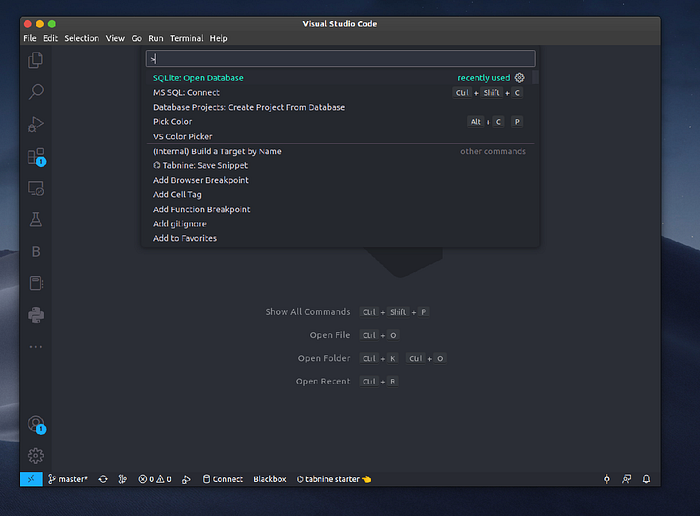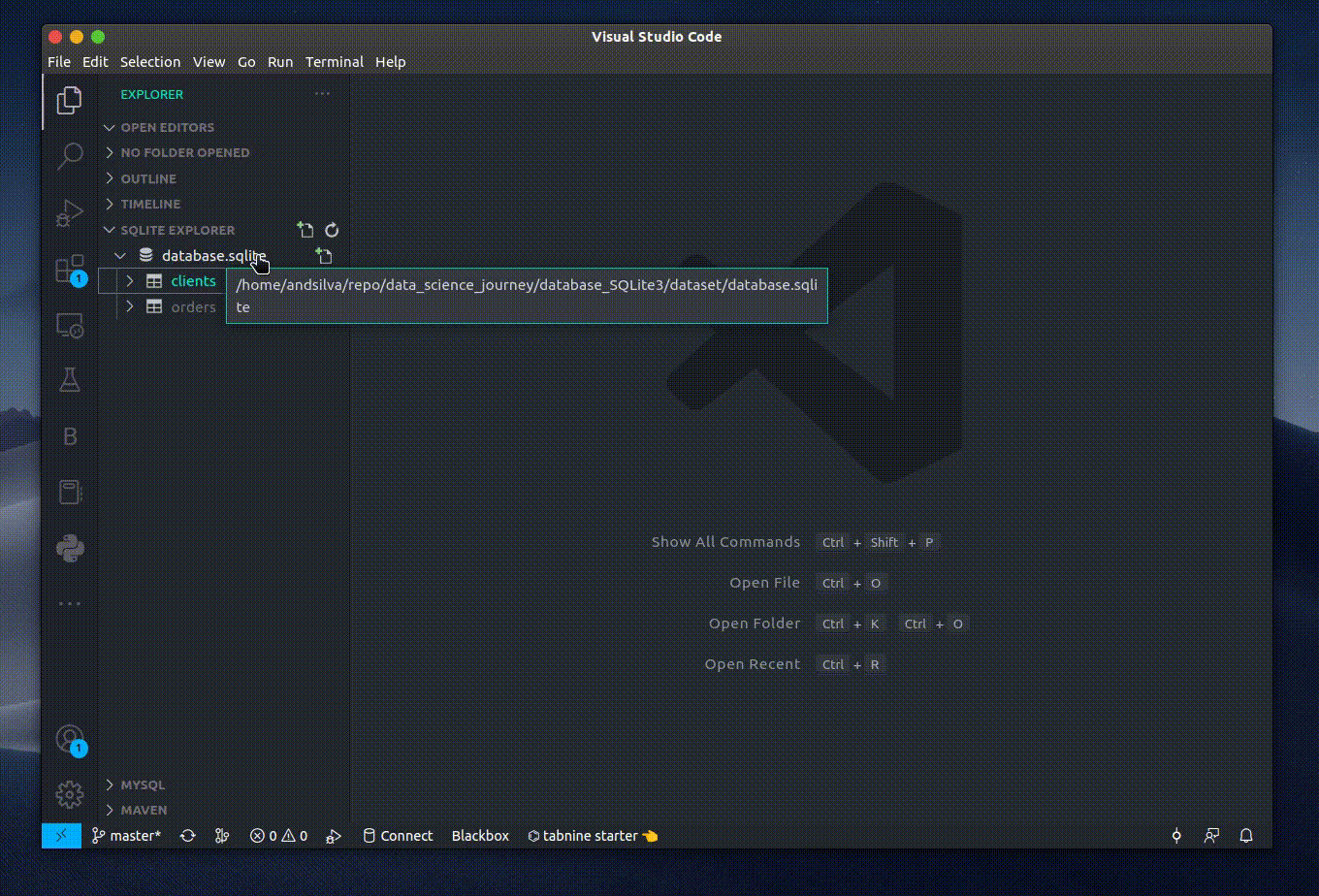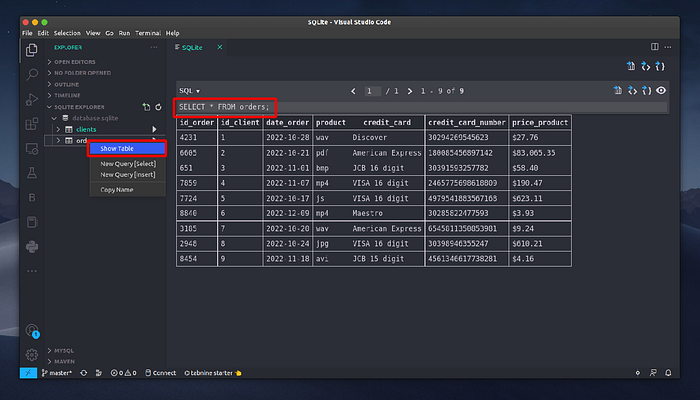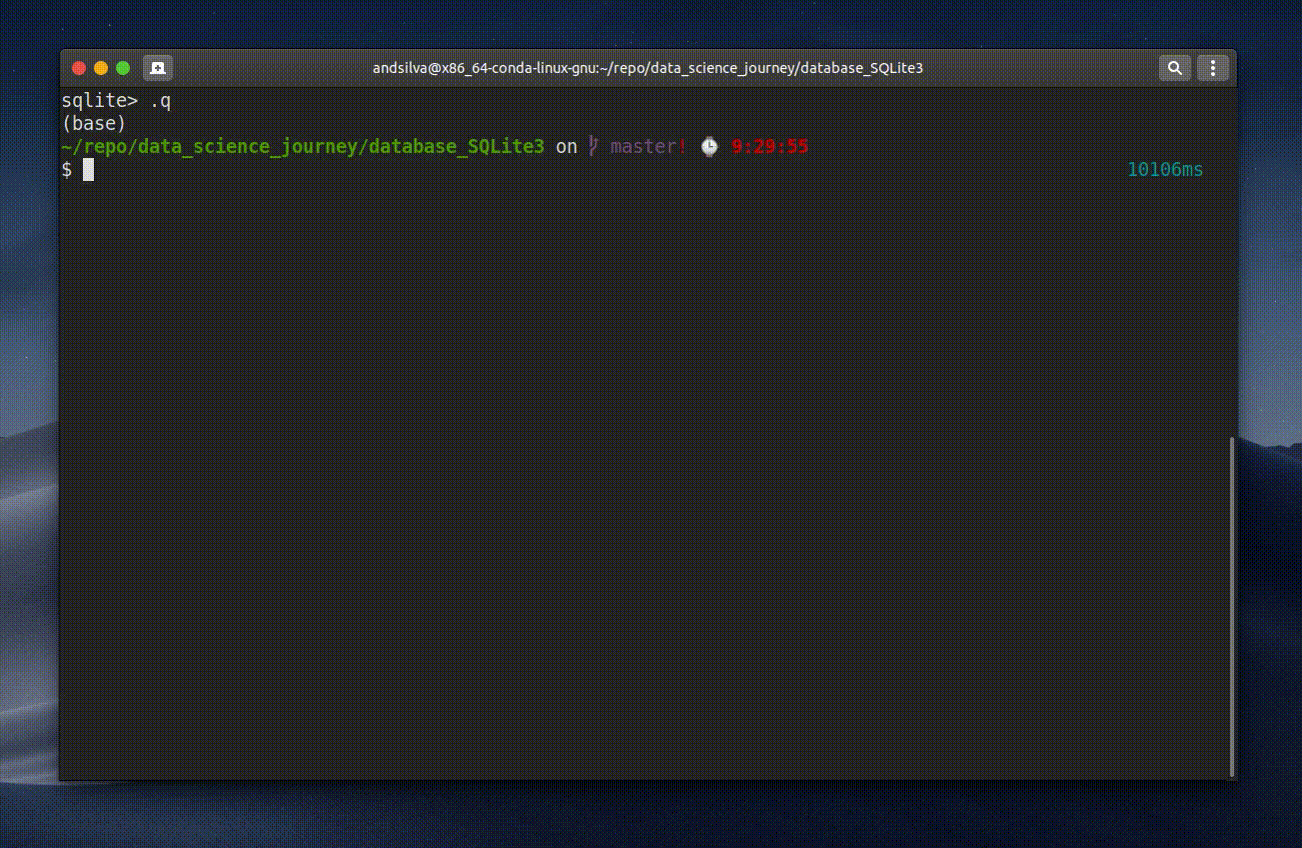I will shed light on SQLite and explain the basics to work with database!
To begin, the natural question is, What is SQLite? According to the documentation:
SQLite is a C-language library that implements a small, fast, self-contained, high-reliability
full-featured, SQL database engine. SQLite is the most used database engine in the world. SQLite
is built into all mobile phones and most computers and comes bundled inside countless other
applications that people use every day.To start, I will describe line-by-line the script in python that I wrote to do this task.
To do this tutorial, you will to install sqlite3 and Faker python packages with the following command:
Install SQLite3 package:
python -m pip install pysqlite3Install Faker package:
python -m pip install FakerSetting the libraries used for this script are:
import sqlite3
from faker import Faker
import random- Faker: Faker is a Python package that generates fake data — Tutorial: How to use → HERE
- random: This module implements pseudo-random number generators for various distributions
NOTE: For this tutorial, If you want to learn by doing yourself, you will need to use the visual studio code (visual studio code) (In this nice introduction — HERE).
The next thing to do is to create a new database and open a database connection to permit sqlite3 to work:
# create and open the database(db).
db = sqlite3.connect("dataset/database.sqlite")Now, we need to create and initialize the faker generator, which to generate the data.
# faker object.
fake = Faker()Using the database created above db, I will execute the command CREATE TABLE in SQL to create the tables: clients and orders:
# create tables
db.execute('''CREATE TABLE IF NOT EXISTS clients (id_client, name_client, phone,
email, age, country, job, company, address, date_register)''')
db.execute('''CREATE TABLE IF NOT EXISTS orders (id_order,id_client, date_order,
product, credit_card, credit_card_number, price_product)''')I also add one condition (IF NOT EXISTS) to the command CREATE TABLE this will prevent to create the table if already exists, for the tables clients and orders.
For the table clients, the columns created were:
- id client
- name Client
- phone
- age
- country
- job
- company
- address
- date register
and for the table orders, the columns created were:
- id order
- id client
- date order
- product
- credit card
- credit card number
- price product
As we already know SQLite is a relational database management system (RDBMS), so we can see that the tables are related through of the column id client.
For this tutorial, I will generate fake data to work around with SQLite3, the fake data will be used for study purposes only.
The next step is to create line-by-line the data for each column in tables clients and orders.
# generate fake data.
# here I will create only 9 lines of data.
# You can change 'range' according to what you want.
for id in range(1,10):
# client information.
id_client = id
name_client = fake.name()
phone_number = fake.phone_number()
email = fake.email()
country_name = fake.country()
country = country_name.replace("'", "") #remove character (') when passed to SQL command.
age = random.randint(18, 80)
job_name = fake.job()
job = job_name.replace("'", "")
company_name = fake.company()
company = company_name.replace("'", "")
address = fake.address()
date_register = fake.date_between(start_date='-3y', end_date='today')
# insert data into the table clients.
db.execute(f'''INSERT INTO clients VALUES({id_client}, '{name_client}',
'{phone_number}', '{email}', {age},
'{country}', '{job}', '{company}',
'{address}', '{date_register}')''')
# client order.
id_order = random.randint(1, 10000)
date_order = fake.date_between(start_date='-90d', end_date='today') # 3 months ago!
product = fake.file_extension()
credit_card = fake.credit_card_provider()
credit_card_number = fake.credit_card_number()
price_product = fake.pricetag()
# insert data into the table orders.
db.execute(f'''INSERT INTO orders VALUES({id_order}, {id_client},
'{date_order}', '{product}',
'{credit_card}', {credit_card_number},
'{price_product}')''')As you can see above, In the loop for the python library Faker() does the creation of the data that are inserted into the database (db) for clients and orders tables.
To execute SQL statements and to get SQL queries, We need to create a database cursor to use, as shown below:
# create a Cursor object and call its execute()
# method to perform SQL commands:
cursor = db.cursor()Now with the cursor that query for clients and orders can be executed by calling the command:
# print the tables
# clients
for row in cursor.execute('SELECT * FROM clients'):
print(list(row))
# orders
for row in cursor.execute('SELECT * FROM orders'):
print(list(row))In the end after the database has been written, we can call close() to close the connection to the database:
cursor.close()And to finish, the commit any pending execution to the database
# save (commit) the changes
db.commit()Close and done:
# we can also close the connection if we are done with it.
# Just be sure any changes have been committed or they will be lost.
db.close()For now, I will describe where is the source code and how to run.
The folder have the files:

The file createdatabase.py is in my github repo — [HERE]:
First, run the python script:
## folder: database_SQLite3
python createdatabase.pyThis will create the database in the folder database called database.sqlite
Now I will show the database on the visual studio code.
To do the next step, you will need to install an extension on visual studio code called SQLite as shown below:

To open the database on the visual studio code: **CRTL+SHIFT+P**:

Just click on SQLite, Open Database after this command will ask to you which database you want to explore, and to explore the database, just go to the left side down to see the SQLITE EXPLORE as shown in the figure below:

and

To see the content of each table, just click with the right button in the option show table this will execute the query, for clients and orders:
SELECT * FROM clients;as shown below:

SELECT * FROM orders;
Another way to look into the database is using the Command Line Interface (CLI) on the terminal:

## Terminal window:
$ sqlite3 dataset/database.sqlite
SQLite version 3.39.3 2022-09-05 11:02:23
Enter ".help" for usage hints.
sqlite> SELECT id_client,name_client,country FROM clients;
1|Brian Sandoval|Yemen
2|Mike Gray|Fiji
3|James Adams|Oman
4|Tony Alexander|Malta
5|Shawn Santana|Jordan
6|Courtney Mcdonald|Pitcairn Islands
7|Tammy Moran|French Guiana
8|Leonard Cox|Montserrat
9|Jennifer Abbott|Saint Barthelemy
sqlite> SELECT id_order,id_client,price_product FROM orders;
4231|1|$27.76
6605|2|$83,065.35
651|3|$58.40
7859|4|$190.47
7724|5|$623.11
8840|6|$3.93
3185|7|$9.24
2948|8|$610.21
8454|9|$4.16If you want to go deep dive into SQL, you can see LEARN SQL: SQL Tutorial for beginners — Programiz. This is a great way to start in SQL! I learned a lot by doing the examples — Hands on.
That’s it for now. I hope you enjoy! If you like it, follow me and comment or make a suggestion below. Thank you very much for read the article, I appreciate.

To know more about me, see my webpage — andvsilva.
Have a nice day :) see you
happy coding :)